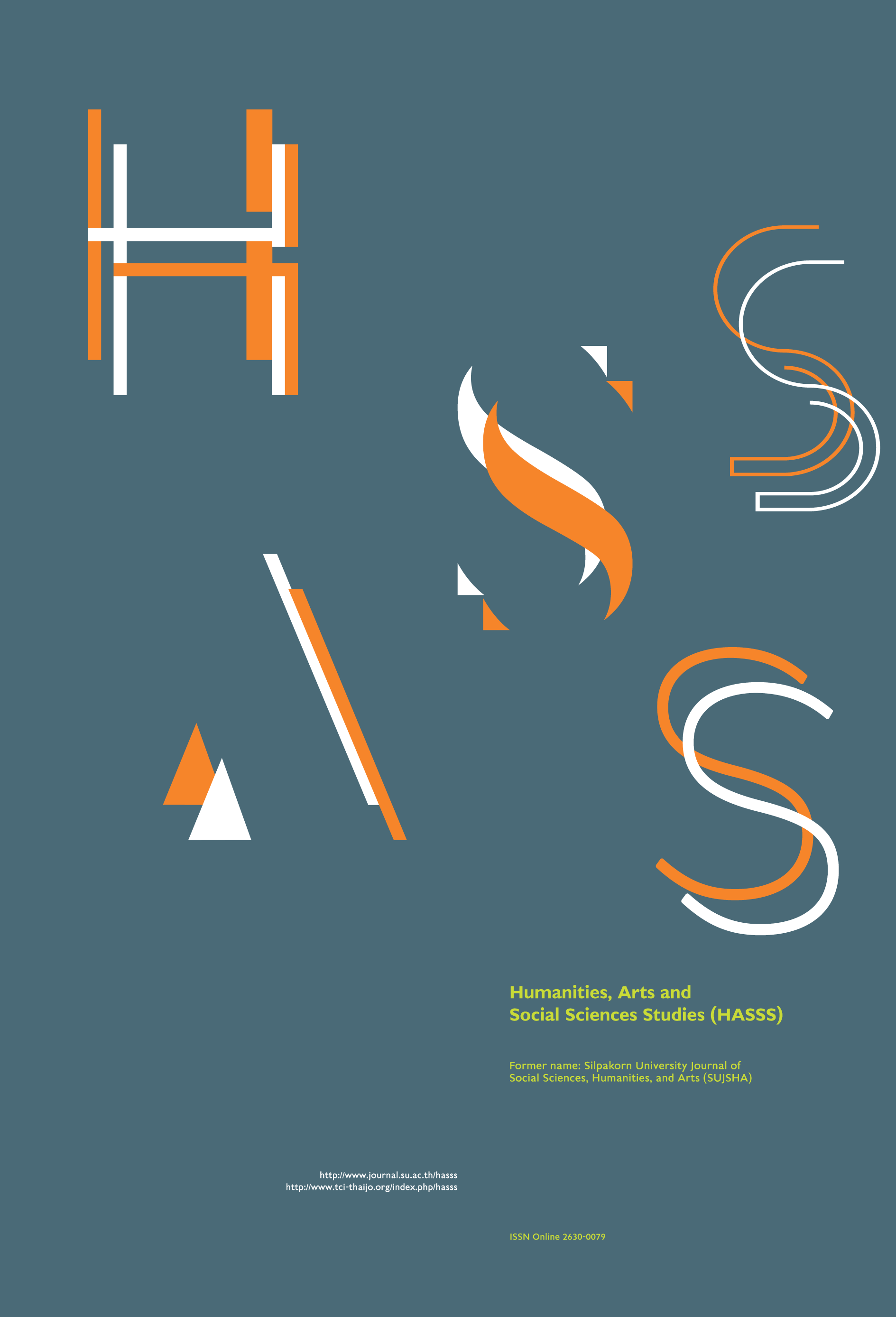Beliefs and Businesses: Existence and Value of Current Religious Magazines
Main Article Content
Abstract
This research aims to analyze the relationship of value and utilization of religious magazines by exploring and studying the compositions of current Buddhist magazines published in Thai between April to September 2019. The study is qualitative in nature, relying on document analysis and content analysis of the selected magazines. The result shows that there are 39 issues, most of which contain folk Buddhism. The visible difference in content between amulet magazines and animist magazines is found in their compositions, i.e., amulet magazines, which mainly deal with small Buddha images and amulet, is composed of color pictures, monk and amulet pictures, amulet advertisement, myths and stories followed by news and activities, coupons, souvenirs (free posters and sacred objects), while animist magazines concern stories of sacred things containing lucky numbers, myths and mysterious stories, monk and amulet pictures, horoscope, amulet advertisements, novels, and coupons respectively. Pictures, souvenirs and coupons are interestingly important compositions in both types of magazines. The compositions of animist and amulet magazines reflect a cycle related to amulet traders, collectors and gamblers. The magazines are the platform providing spaces for advertising beneficial to magazine producers, temples, sacred place and object owners. It is also a great way for amulet buyers and gamblers in pursuit of fortune and relevant information. They are thus still an effective instrument used to encourage religious beliefs and concerning businesses for the specific groups of people.
Downloads
Article Details

This work is licensed under a Creative Commons Attribution-NonCommercial-NoDerivatives 4.0 International License.
All rights reserved. Apart from citations for the purposes of research, private study, or criticism and review,no part of this publication may be reproduced, stored or transmitted in any other form without prior written permission by the publisher.
References
Boonsiri, A. (2007) Exposure to Utilization of and Satisfaction with Buddha Amulet Magazines. Nonthaburi: Sukhothai Thammathirat University.
Chantip, D. (2012) Magazine’s influences on Readers in the Consumerism Society. Executive journal 32(2): 111-119.
Dominick, J. (1996) The Dynamics of Mass Communication. New York: McGraw-Hill.
Hirunrak, D. (1987) Magazines. Bangkok: Faculty of Communication Arts Chulalongkorn University.
Khamson, A. (2016) Evaluation of Contemporary Literary Criticism in Thailand: Cultural Transformation from Orality through Print Media to Intern. Songklanakarin Journal of Social Sciences and Humanities. 22(3): 69-114. [Online URL: https://www.tci-thaijo.org/index.php/psujssh/article/view/90640] accessed on September 1, 2016.
Kittijaroenwong, J. (2018) The Production and Existence of electronic magazines. Journal of Management Science Chiangrai Rajabhat University 5(2): 35-63. [Online URL: https://so03.tci-thaijo.org/index.php/jmscrru/article/view/128122] accessed on June 12, 2018.
Likhithammarojn, P. and Kiatabthew, T. (1999) Buddhist amulets and Thai society: case study effect on the social well-being of Thai people. NIDA Development Journal 42(1): 111-139.
Morrish, J. (2001) Magazine Editing: How to Develop and Manage a Successful Publication. London: Routledge 37-39.
Mott, F. L. (1968) A History of America Magazines Volume 1. Cambridge: Harvard University Press.
Panaram, O. (2004) Mass media and the propagation of Buddhism. Journal of Buddhist Religion Studies Chulalongkorn University 11(3): 6-65.
Pirasilp, P. (2016) Is the publication dead? Part 1. [Online URL: https://www.facebook.com/ADVERTISINGNewspaper/photos/a.430141810356567/1030171680353574/?type=3] accessed on August 2, 2019.
Prakobpol, R. (1987) Thai magazines. Bangkok: Chulalongkorn University.
Pungente, J. (1989) Media Literacy: Resource Guide. Ontario: Ministry of Education.
Pusaksrikit, T. and Pongsakornrungsilp, S. (2014) Semiotics of Superstition toward Government Lottery and Underground Lottery Purchasing Behavior of Thai Consumers. Veridian E-Journal 7(2): 1348-1361.
Rice, G. H. (1985) Available information and superstitious decision making. Journal of General Management 11(2): 35-44.
Sujachaya, S. (2013) Cultural Capital and Today’s Sacred Objects. Journal of Letter 42(2): 75-102.
Suwannaperm, W. (1988) Magazines. 4th ed. Bangkok: Ramkhamhaeng University.
Tantraphon, S. (2016) Is the publication dead? Part 2. [Online URL: https://www.facebook.com/ADVERTISINGNewspaper/photos/a.430430141810356.89658.331154326921983/1031730383531037/?type=3] accessed on March 31, 2016.
Thaipublica. (2016) List of magazines sold on the bookstand. [Online URL: https://thaipublica.org/wp-content/uploads/2016/01/นิตยสารบนแผง.xlsx] accessed on January 1, 2016.
Tagong, W. (2007) Factors Effecting the Readers of Occult Magazines. Bangkok: Ramkhamhaeng University. [Online URL: https://digital.lib.ru.ac.th/m/b11392150/WikhanesuanTagong.pdf] accessed on 2007.
Wanliko, P. (1997) The Basic of Newspaper. 3th ed. Bangkok: Ramkhamhaeng University.
Wongmonta, S. (1999) Marketing Strategy: Marketing Planning. Bangkok: Teeraflimand Cytex company.
Yurungruangsak, N. (2011) Buddha amulets and Thai society from the world war II to 2007 A.D.: a study of beliefs, forms and buddhist commerce. Master’s Thesis. Silpakorn University, Thailand.


